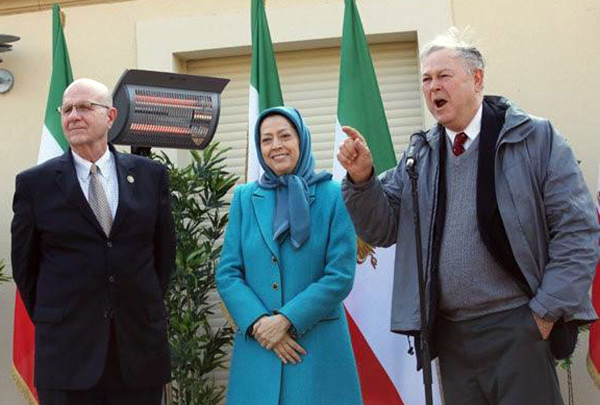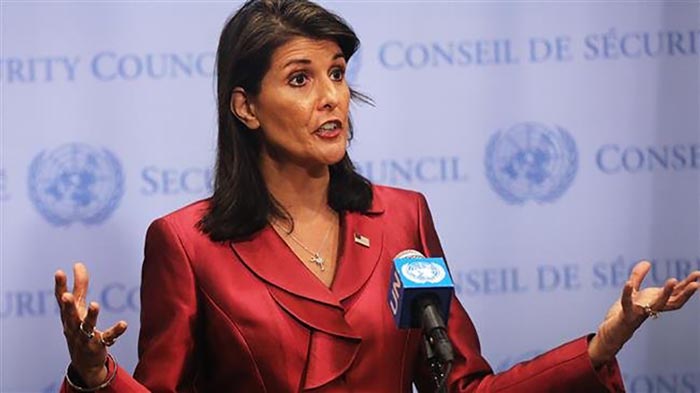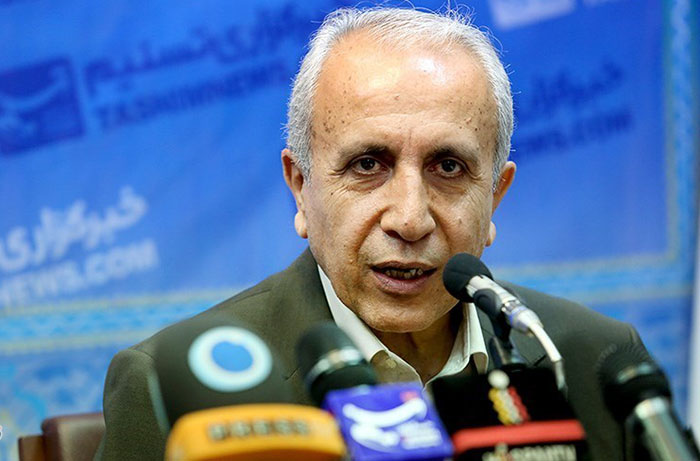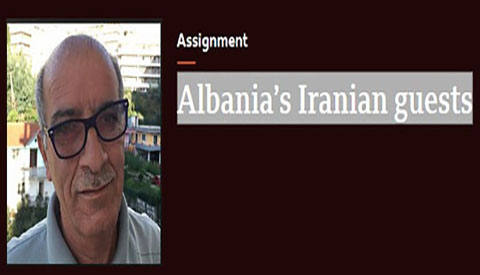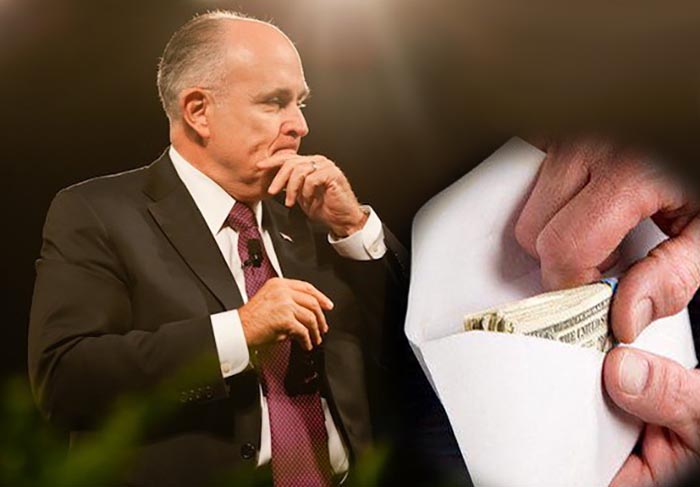Iran’s Opposition Groups are Preparing for the Regime’s Collapse. Is Anyone Ready?
In July 13, President Donald Trump’s personal lawyer, Rudi Giuliani, addressed an Iranian opposition group called the Mujahedin e-Khalq (MEK) at the group’s tightly guarded encampment in rural Albania, where some 3,400 members have been preparing for the overthrow of the clerical regime in Tehran.
Calling the MEK Iran’s”government-in-exile,”Giuliani assured MEK members that the Trump administration regards the group as an acceptable replacement for the current regime.”It gives us confidence that if we make those efforts to overthrow that horrible regime, sooner rather than later, we will not only save lives but we will be able to entrust the transition of Iran to a very responsible group of people,”the former New York City mayor told his cheering audience.
Like other former U.S. officials, Giuliani has been a frequent—and highly paid speaker—at MEK events over the past several years. So has John Bolton, Trump’s hawkish national security adviser, who has earned $180,000 from his MEK speeches according to Joanne Stocker, an editor at The Defense Post and an expert on the MEK. Bolton stopped addressing the group last year when he took up his White House post, which precludes such appearances.
But in his last speech to the MEK at a Paris rally in 2017, Bolton enthusiastically endorsed the group’s claim to be the most attractive alternative to the Iranian regime.”There is a viable opposition to the rule of the ayatollahs and that opposition is centered in this room today,”Bolton said. His financial disclosure showed he earned $40,000 for that speech.
The MEK, whose name means the”People’s Holy Warriors,”is the oldest, best organized and best known of several Iranian opposition movements waiting in the wings. But there are others. One group are the monarchists, led by the son of the deposed shah, Crown Prince Reza Pahlavi, who hopes to coordinate the different opposition groups and create a provisional government until democratic elections can be held. There are also several armed groups representing Iran’s oppressed ethnic and religious minorities, who favor a federal-style government that will give their regions greater autonomy.
Earlier this year, the Trump administration said it would not rule out the MEK as a viable replacement for the current regime. But at the same time, senior officials also stress that Trump is not seeking regime change. Instead, these officials say, the administration is focusing on Trump’s campaign of economic sanctions against Iran aimed at forcing the regime to negotiate what U.S. officials call”behavioral changes.”They include a verifiable end to Iran’s nuclear weapons program, a halt to its ballistic missile development and a stop to its support for proxy militias in Lebanon, Syria, Iraq and Yemen that have expanded Iran’s influence throughout the Middle East. Iran has rejected the administration’s demands, describing them as tantamount to regime change.
Regime change or no regime change, the opposition groups remain deeply divided, which undermines their chances of ever taking power, Iran experts say. Over the years, several opposition groups have tried repeatedly to form a united front against Tehran, but their attempts have failed because of clashing histories, agendas and personalities.
Opposition to Iran’s clerical regime, in the form of street protests and armed attacks on government officials and installations, has been around since the country’s 1979 Islamic revolution. But something is different now. What distinguishes the most recent protests from those that erupted in 2009, 2017 and 2018 are both the severity of Iran’s economic woes and the regime’s reluctance to crack down hard on the demonstrators for fear of sparking another revolution.”These days, they’re cautious,”Abdullah Mohtadi, the leader of the Iranian Kurdish Komala Party, one of the country’s principal ethnic opposition groups, told Newsweek.”They know how fragile the system is.”
Administration officials say that Iran’s leaders can either negotiate the behavioral changes Trump is demanding or watch their country’s economy crumble. Eventually, they insist, the Iranian regime will bend to the president’s will. So far, Iran continues to defy Trump with a campaign of threats and harassment against shipping in the Persian Gulf that has drawn U.S. and British naval and air reinforcements to the region. Meanwhile, a recent Swiss intelligence assessment reportedly says Iranian leaders will wait out the U.S. elections in November 2020 in the hope Trump is defeated—and a Democratic administration lifts the sanctions under a return to the 2015 nuclear deal.
Still, many analysts say the current tensions could easily escalate into an armed conflict and the collapse of the Tehran regime. That prospect has raised the question of what kind of Iranian government might come next. And that conversation inevitably turns to Iran’s opposition groups.
The Mystery of the MEK
The MEK has been the leading opposition voice against the Islamic Republic for years. For the past decade, MEK leaders and their supporters have presented the group as a secular, democratic and nonviolent organization with widespread popular support inside Iran.
It is also the most controversial group. Many former U.S. officials and Iran experts question the MEK’s democratic credentials, as well as the depth of its support base inside Iran. Indeed, virtually every claim made by the MEK draws denials and counter-narratives.
Founded in 1965 by Iranian students who opposed the U.S.-installed monarchy of Shah Mohammad Reza Pahlavi, the MEK espoused an odd hybrid of Marxism and Islam. It was the first opposition group to take up arms against the shah and his supporters in the west. In the 1970s, according to U.S. intelligence, the MEK assassinated three U.S. Army colonels, murdered another three American contractors and bombed the facilities of numerous U.S. companies, earning it a place on Washington’s list of foreign terrorist organizations.
The MEK also backed Ayatollah Ruhollah Khomeini, who led the Islamic revolution that deposed the shah in 1979. The group supported the takeover of the U.S. embassy, but it broke with Khomeini over his decision to release the American hostages. In 1981, after launching an abortive uprising against the Khomeini regime, the MEK was forced underground while its top leaders, the husband and wife team of Massoud and Maryam Rajavi, fled to Paris to avoid arrest.
But the Iraq-Iran war, which had begun in 1980, provided the MEK with another opportunity to fight the regime. The group aligned with Saddam Hussein and sent some 7,000 MEK members to Iraq for military training. Equipped by Saddam, the MEK fought numerous battles against Iranian forces during the war. In 1988, the group launched an armored invasion to topple the regime but suffered a major defeat, losing more than 3,000 soldiers. The invasion also prompted Iran to execute thousands of MEK political prisoners. Once the war ended later that year, Saddam prevented the group from conducting further cross-border attacks.
Many independent scholars say the MEK’s alliance with Saddam in that long and bloody war turned the group into traitors in the eyes of most Iranians. In the 1990s, the Rajavis instituted a number of cult-like measures to prevent defections. According to a 2005 Human Rights Watch report based on interviews with several defectors, members were required, among other things, to divorce their spouses and send their children abroad for adoption, lest family obligations divert their attention from the struggle against the Islamic Republic.
After U.S. forces toppled Saddam and occupied Iraq in 2003, they disarmed the MEK and placed its remaining 3,400 MEK members under U.S. protection. That same year, Massoud Rajavi mysteriously disappeared, and Maryam assumed sole leadership of the group.
In 2009, she launched a multi-million-dollar campaign from her Paris headquarters to get the MEK removed from Washington’s terrorist list. Despite its official status as a foreign terrorist organization, the MEK operated openly in Washington from offices in the National Press Club, warmly embraced by Iran hawks. The group hosted lavish receptions on Capitol Hill and began paying as much as $50,000 to prominent U.S. political and military figures to deliver speeches that stressed what the group said was its commitment to a secular, democratic Iran.
In addition to Bolton and Giuliani, the list of the MEK’s paid speakers included former White House Chief of Staff Andrew Card, former national security adviser Gen,. James Jones, former White House terrorism adviser Fran Townsend, former Attorney General Michael Mukasey, former Homeland Security Secretary Tom Ridge, former FBI director Louis Freeh, former CIA Director Porter Goss, former deputy CIA Director John Sano, former Joint Chiefs Chairman Gen. Richard Myers, Gen. Wesley Clark, Gen. Anthony Zinni, former Vermont Gov. Howard Dean, former Pennsylvania Gov. Ed Rendell, former senators Robert Torricelli and Evan Bayh, and Reps. John Lewis and Patrick Kennedy, among others.
“Some people do it just for the money; others do it because they hate the Islamic Republic of Iran,”said Barbara Slavin, who heads the Future of Iran project at the Atlantic Council, a foregn policy think tank in Washington.”They embrace the old adage that the enemy of my enemy is my friend, and they know this is a group that gives Iran heartburn. To top it off, they pay well.”
The question of how the MEK could afford such generous speaking fees was partially answered when Newsweek first reported that the post-war search for Iraq’s alleged weapons of mass destruction uncovered documents showing Saddam Hussein had given the group vouchers for the sale of more than 38 million barrels of oil to overseas middlemen for the four years preceding the U.S. invasion. A report by Charles Duelfer, the chief U.S. weapons inspector, estimated the MEK earned as much as $16 million from the sales of the vouchers. (After Saddam’s fall, many experts have speculated that Saudi Arabia, Iran’s arch rival, took over funding for the group.)
Meanwhile, the MEK became known as a valuable intelligence asset. In 2002, the MEK was credited with exposing Iran’s then-secret uranium enrichment plant at Natanz, which led to United Nations inspections. Over a five-year period starting in 2007, MEK assassins—financed, trained and armed by Israel’s Mossad intelligence service—killed a half dozen Iranian nuclear scientists, U.S. officials told NBC News.
In 2011, pro-Iranian militias in Iraq killed some 140 MEK members and deeply embarrassed the U.S. military, which was responsible for their protection. To prevent further slaughter, then-Secretary of State Hillary Clinton took the group off the terrorist list in 2012, a move that paved the way for the evacuation of Camp Ashraf’s MEK members to Albania.
But had anything really changed?
Daniel Benjamin, the State Department coordinator for counterterrorism at the time, told Newsweek the delisting was done”at the discretion of the secretary out of humanitarian concern because no country would take them otherwise, and not because of any changed thinking within the MEK. We simply didn’t want any more blood on our hands.”
“The MEK has done a great job in gussing themselves up as democrats,”said Benjamin, now director of The Dickey Center for International Understanding at Dartmouth College.”They talk the talk, but there’s no evidence whatsoever that they’ve changed in any way. And there is zero question about their support inside Iran itself —they have no statistically significant group of supporters in Iran.”
Officials of the MEK and its political arm, the National Council of Resistance of Iran (NCRI), vehemently deny this version of the group’s history, including any responsibility for the assassination of Americans.
“The Iranian regime has been engaged in this misinformation campaign for four decades,”Ali Safavi, director of the group’s Washington office told Newsweek.”They have invested huge sums of money in it and developed a sophisticated network of talking heads and lobbies in the U.S. and Europe to demonize the Iranian opposition as having no support inside Iran and being undemocratic.”
In the Magazine
Today, he said, the NCRI”brings together several different groups and about 500 well-known opposition personalities who are committed to the establishment of democratic, secular and non-nuclear republic.”Its funding, he says, comes solely from wealthy members of the Iranian diaspora community.
But other opposition groups say the MEK has rebuffed their overtures for coordination.”They’re deaf to any proposals other than their own beliefs,”said the leader of one opposition group, who spoke on condition of anonymity to discuss sensitive opposition politics.
A Royal Figurehead Emerges
As the Trump administration tightens the economic screws on the Islamic Republic, Crown Prince Reza Pahlavi has been speaking out against the regime in Tehran and calling for opponents to band together under his leadership and vision for a democratic Iran.
Pahlavi, 58, was only 17 when the Iranian revolution drove his family into exile. But over the past four decades, he has kept a close watch on developments in Iran, where he says discontent with government corruption and economic mismanagement has brought the regime to the brink of collapse.”The atmosphere [in Iran] seems to be close to a flash point,”he told Radio Farda, the U.S. government’s Persian-language broadcast service, in February.
But though Pahlavi lives just outside Washington, he’s been an unfamiliar figure in foreign policy circles. Critics have said he lacks charisma and resolve. In 1980, he issued a proclamation declaring himself shah but later retracted it. In the 1980s, U.S. intelligence reportedly approached Pahlavi with a proposal to land a monarchist force on Iran’s Kish island in the Persian Gulf with U.S. naval and air support. Pahlavi’s first question allegedly focused on the exit strategy.
But since late last year, Pahlavi has set out to raise his profile by meeting with think tanks to explain the role he could play as the regime’s disparate opposition groups prepare for its downfall. Pahlavi says he sees himself as a figurehead who can guide those groups in producing a common plan for a political transition. He already has taken a step in that direction with his Phoenix Project, an effort to bring together exiled Iranian scientists, scholars and experts to address the problems any democratic successor government in Iran will face. He has said he had no personal ambition to rule Iran.
Pahlavi’s supporters include several monarchist groups made up of Iranian exiles in the United States and Europe, as well as an unknown number in Iran, some of whom called for a return of the monarchy during anti-government demonstrations in 2017.
Over the past few years, several Europe-based TV stations have been broadcasting pro-monarchy programs into Iran in an effort to create a mood of pre-revolution nostalgia. But Pahlavi remains unpopular among Iran’s ethnic minorities, who haven’t forgotten the monarchy’s Persian chauvinism. And some Iranian Americans have urged the crown prince to distance himself from his late father’s authoritarian rule as a prerequisite for any leadership role.
Patrick Clawson, the Washington Institute’s director of research, suggested Pahlavi would prefer a role as a ceremonial monarch with no responsibility for governing along the lines of Britain’s constitutional monarchary.”He wants to be Queen Elizabeth,”Clawson told the Atlantic Council’s Slavin.
Among all the Iranian opposition groups, the ones that are doing the most actual fighting against the regime are those representing the country’s ethnic and religious minorities—Kurds and Azeris in the northwest, Arabs in the southwest, and Balochis in the southeast, all of whom demand autonomy for their regions.
According to Naysan Rafat, an Iran expert at the International Crisis Group, these groups have been conducting frequent but small-scale attacks on government targets since the revolution. The government portrays them as terrorists, supported by regional rivals.
For the past few years, Iranian Kurdistan’s Komala Party has taken the lead in trying to unify these different groups behind the idea of replacing Iran’s clerical regime with a decentralized federal government whose constitution will safeguard the rights of the country’s ethnic minorities.
“What is certain is that this regime will collapse sooner or later,”the Komala Party’s Mohtadi said.”We want to avoid the possibility that a collapse will lead to the break-up of the country into different ethnic regions.”
Mohtadi is urging the Trump administration to establish contact with the opposition groups to plan for what comes next. Without such preparations, he warned, the regime’s collapse could be followed by a seizure of power by Iran’s Revolutionary Guards—or the country’s disintegration into chaos.”The Trump administration has pressured the Iranian regime economically and politically,”Mohtadi allowed,”but in terms of reaching out to the Iranian opposition, I haven’t seen anything serious.”
Waiting For A Spark
In fact, the Trump administration has not met with any Iranian opposition figures, deliberately distancing itself from the groups for now.”The future of Iran will be decided by the Iranian people,”Brian Hook, the administration’s special representative for Iran, told Newsweek in an interview.”We do not pick winners and losers on that issue.”
Of course, that could change overnight. White House aides say Bolton is still trying to convince the president to adopt an explicit policy of regime change in Iran, which would increase the value of opposition groups. Analysts say that is particularly the case for the MEK, given the group’s organization, funding and high visibility in Washington.
Some supporters believe the MEK already has moved to the head of the line with the administration’s decision not to rule out the group as a viable alternative to the regime in Tehran.
But for now, Trump’s economic sanctions remain the principal element of his Iran policy.”If we want to get to a point where Iran’s proxies are weaker and the regime doesn’t have the resources that it needs to destabilize the Middle East, it will require economic pressure,”Hook said.”There is no other way to accomplish that goal.”
For the Iranian opposition groups, this state of no peace—and no war—means that there is no leadership vacuum in Iran to fill. And as the tensions between Tehran and Washington continue to simmer, all these groups can hope for is a spark that will finally put Iran’s political future in play.
Will they—and Washington—be ready?
Newsweek.com

